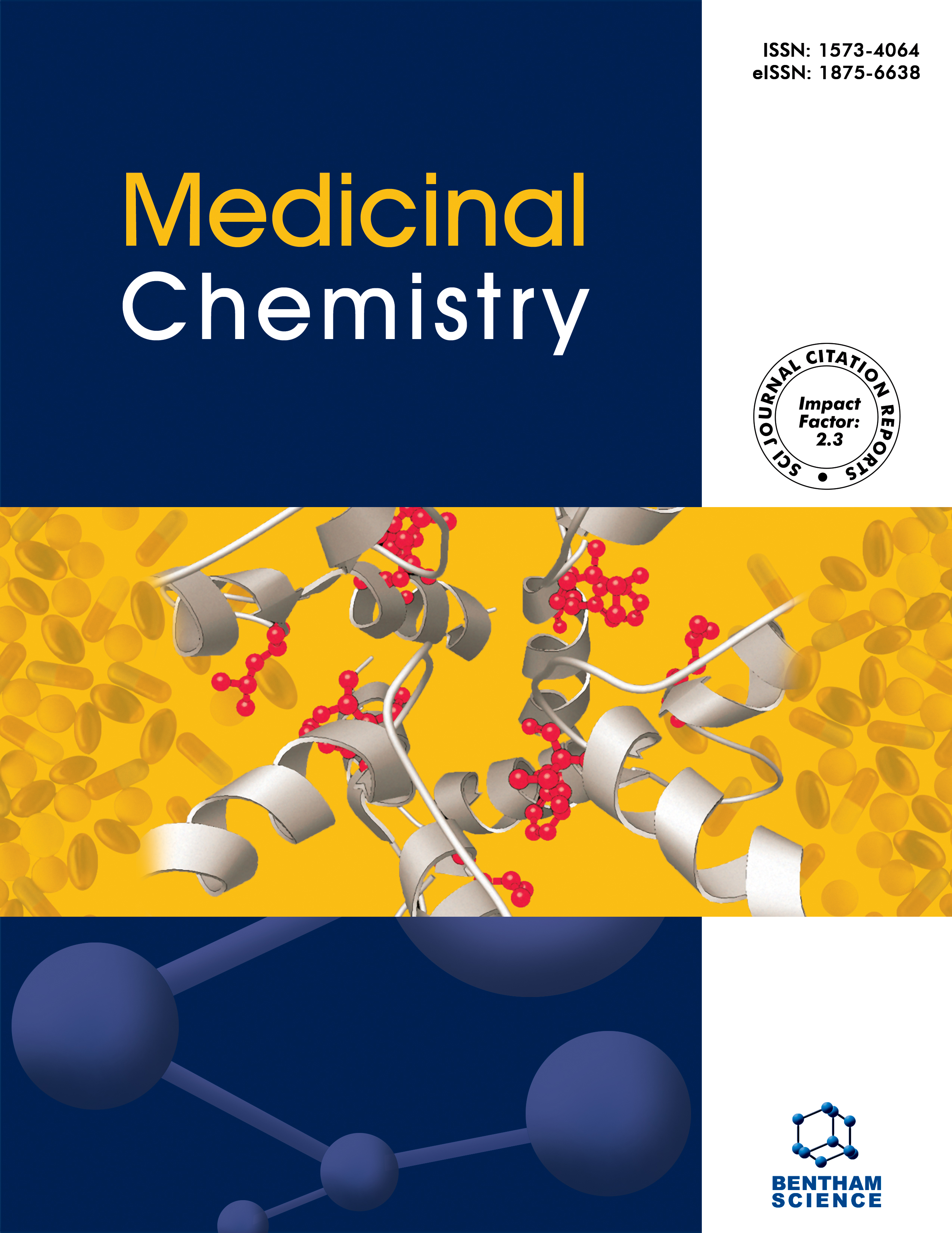- Home
- A-Z Publications
- Medicinal Chemistry
- Previous Issues
- Volume 14, Issue 2, 2018
Medicinal Chemistry - Volume 14, Issue 2, 2018
Volume 14, Issue 2, 2018
-
-
Managing Neuropathic Pain in Multiple Sclerosis: Pharmacological Interventions
More LessAuthors: Samuel S. Duffy, Justin G. Lees, Chamini J. Perera and Gila Moalem-TaylorBackground: Multiple sclerosis (MS) is a chronic inflammatory demyelinating disease of the central nervous system (CNS). Of the plethora of motor and sensory disturbances experienced by sufferers, neuropathic pain is a highly prevalent and debilitating symptom, and at present remains extremely difficult to treat. Common forms of neuropathic pain seen in MS patients include central neuropathic pain, Lhermitte's pheno Read More
-
-
-
Myelin Oligodendrocyte Glycoprotein and Multiple Sclerosis
More LessBackground: Myelin oligodendrocyte glycoprotein (MOG) is located on the external surface of myelin, a membranous component of the central nervous system (CNS) that forms the insulating lipid layer around neurons. The major MOG splicing variant (a1 transcript) encodes a transmembrane protein with an extracellular domain of an Ig variable (IgV) fold. MOG IgV domains from the same or different cells dim Read More
-
-
-
The Role of Vitamin D in Multiple Sclerosis: Biology and Biochemistry, Epidemiology and Potential Roles in Treatment
More LessAuthors: Steve Simpson Jr, Ingrid v. der Mei and Bruce TaylorBackground: Multiple sclerosis (MS) is a progressive, demyelinating condition of the central nervous system, manifesting in loss or alterations in function of sensory, motor and cognitive function. Of the various environmental and behavioural risk factors identified as playing a role in MS onset and progression, perhaps none has been as consistent as vitamin D. Objective: In this review, we will endeavour to present a general ba Read More
-
-
-
Therapeutic Monoclonal Antibodies and Multiple Sclerosis: The Essentials
More LessAuthors: Ioannis Heliopoulos and Athanasia PatousiBackground: Monoclonal antibodies (mAbs) are now established as targeted therapies for malignancies, transplant rejection, autoimmune and infectious diseases. Two monoclonal antibodies are available for treatment and other antibodies are currently being tested in multiple sclerosis (MS) patients. Objectives: The purpose of the present review paper is to outline the antibody engineering technologies, the immunologic and Read More
-
-
-
An Update on the Role of Matrix Metalloproteinases in the Pathogenesis of Multiple Sclerosis
More LessAuthors: Marina Boziki and Nikolaos GrigoriadisBackground: Matrix metalloproteinases (MMPs) are zinc-containing endopeptidases, proteins essential to the degradation of various tissue extracellular matrix proteins. Under normal conditions, MMPs participate in several physiological processes, both in the developing organism and the adult. Multiple sclerosis (MS) is an inflammatory demyelinating disease of the central nervous system (CNS), affecting primarily youn Read More
-
-
-
Is there a Link between Vitamin B and Multiple Sclerosis?
More LessBackground: Damage to the myelin sheath (demyelination) is one of the main manifestations of multiple sclerosis (MS). Interestingly, both MS and vitamin B deficiencies result in severe myelin degeneration, leading to loss in neuronal signal transmission. Objective: Deficiency in vitamin B complex vary, although common symptoms include fatigue, increased oxidative stress, inflammation and demyelination. In particular, vi Read More
-
-
-
Synthesis, Antiproliferative and Pro-Apoptotic Effects of Nitrostyrenes and Related Compounds in Burkitt's Lymphoma
More LessBackground: Cancers of the lymphatic cells (lymphomas) account for approximately 12% of malignant diseases worldwide. The nitrostyrene scaffold is identified as a lead target structure for the development of particularly effective compounds targeting Burkitt's lymphoma (BL). Objectives: The aims of the curent study were to synthesise a panel of nitrostyrene compounds and to evaluate their activity in Burkitt's Read More
-
-
-
9-(4'-dimethylaminophenyl)-2,6,7-trihydroxy-xanthene-3-one is a Potentially Novel Antiplatelet Drug which Antagonizes the Effect of Thromboxane A2
More LessBackground: Currently, used oral antiplatelet drugs are both limited and associated with the risk of treatment failure/resistance. Research in this area is hence highly desired. A series of xanthene-3-ones derivatives, we had synthesized, showed us that these derivatives had antiplatelet activity. As far as we know, no research on the effects of xanthen-3-ones in this area has been done. Objective: The aim was to study the antipla Read More
-
Volumes & issues
-
Volume 21 (2025)
-
Volume 20 (2024)
-
Volume 19 (2023)
-
Volume 18 (2022)
-
Volume 17 (2021)
-
Volume 16 (2020)
-
Volume 15 (2019)
-
Volume 14 (2018)
-
Volume 13 (2017)
-
Volume 12 (2016)
-
Volume 11 (2015)
-
Volume 10 (2014)
-
Volume 9 (2013)
-
Volume 8 (2012)
-
Volume 7 (2011)
-
Volume 6 (2010)
-
Volume 5 (2009)
-
Volume 4 (2008)
-
Volume 3 (2007)
-
Volume 2 (2006)
-
Volume 1 (2005)
Most Read This Month
Article
content/journals/mc
Journal
10
5
false
en


